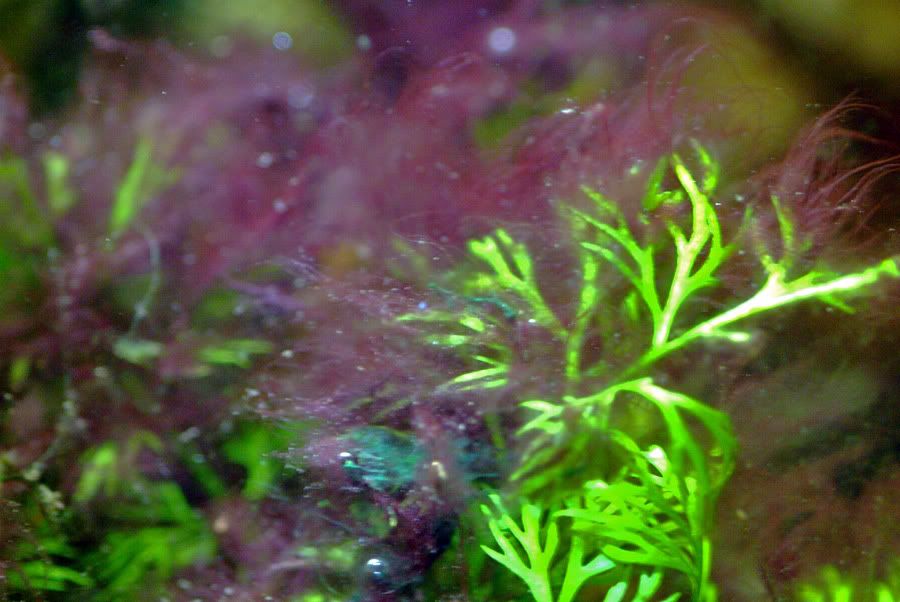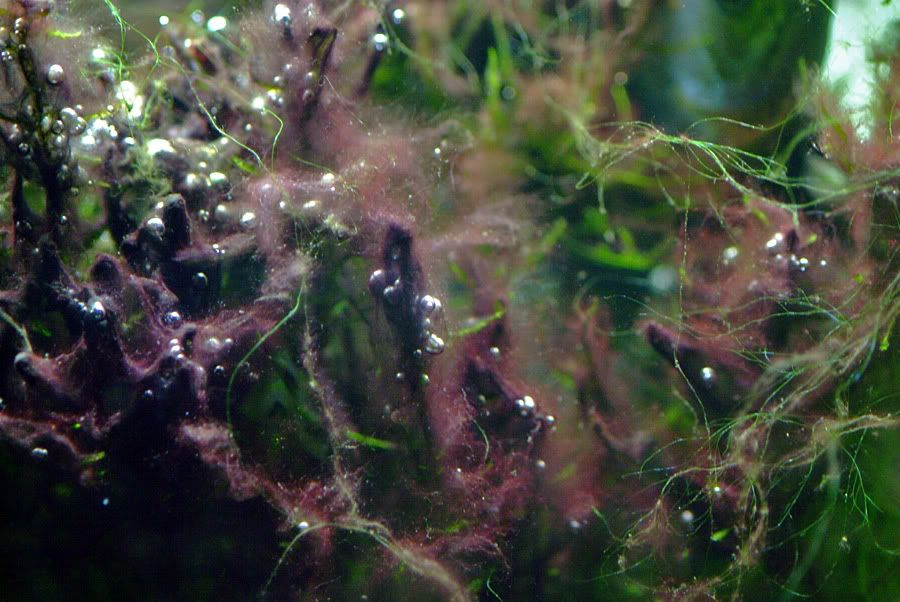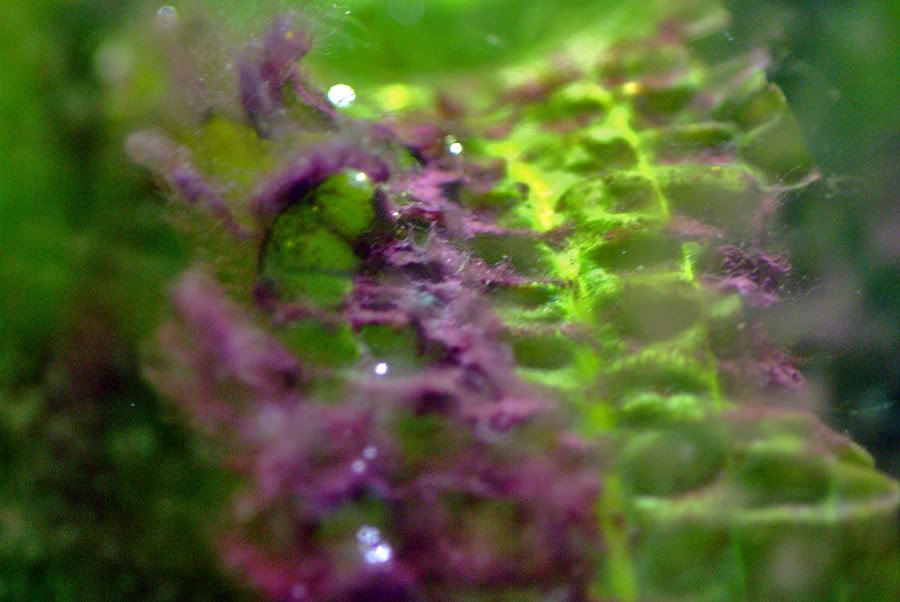I can live with the green filamentous algae as it is rather easy to remove (not as fast growing as the brown) from time to time but the brown algae is pervasive and would be very difficult and probably impossible to remove. The brown algae looks terrible.
Question: Can anybody give me a regime to remove or kill the brown algae? I would prefer not to start over on the tank. I have reduced the daily light exposure to the tank but don't know where to go from here. Surely others more experianced than me have dealt with this in the past and have a good plan of action. Is there a chemical control solution that will not hurt my sunfish? Can you share?
I am afraid my super efficient LED lights are partly to blame and I have had them on daily for about 10 hours. The green plants have grown remarkabley well but along with that was algae growth that started slow and then took off. I meant to reduce this to 6 to 8 hours for the past few months but I never did. I know that the tank is seeded with pond water (which contains algae) from time to time as I add plants and fish so algae will always be a potential issue. After I rid the tank of the brown algae how best to I control future algae growth do not to have it rise to this level again? I have a small UV light on the tank but am afraid it was not much help.
I will try to add pictures later today.
Usil
Edited by Usil, 31 January 2012 - 01:51 PM.












